Kkakdugi
깍두기
Kkakdugi or diced radish kimchi is a variety of kimchi in Korean cuisine. Usually, Korean radish (called mu 무 in Korean) is used, but other vegetables or fruits can also be used. Kkakduk-kkakduk is an ideophone related to dicing/cubing. Kimchi made with radish that are not diced into cubes are not called kkakdugi. Kkakdugi is a popular banchan (side dish) enjoyed by Koreans and others. The origin of kkakdugi is mentioned in a cookbook named Joseon yorihak (조선요리학 朝鮮料理學, literally "Korean Gastronomy") written by Hong Seon-pyo (홍선표) in 1940. According to the book, kkakdugi was created by Princess Sukseon (숙선옹주, 淑善翁主), a daughter of King Jeongjo (r. 1776–1800) and the wife of Hong Hyeon-ju (홍현주, 洪顯周), a high-ranking government officer titled as Yeongmyeongwi (영명위, 永明慰). When a matter for congratulation happened to the royal court, members of the royal family gathered to have a feast, and the princess presented a new dish made with diced radish to the king. He highly praised it and asked her about the dish's name. She replied that the dish did not have a name because she had accidentally made it, but found that it tasted good, so she brought in the new dish to the court. The king replied that the dish would be named kkakdugi because cutting food into cubes is called kkakduk sseolgi (깍둑썰기) in Korean. At that time, kkakdugi was called gakdokgi (각독기 刻毒氣, literally "removing the harshness"), from 각(刻) (gak, "to harm, damage") + 독(毒) (dok, "substance harmful to health or life") + 기(氣) (-gi, "energy, feeling, element"), and then became spread among the common people.
Source: Wikipedia
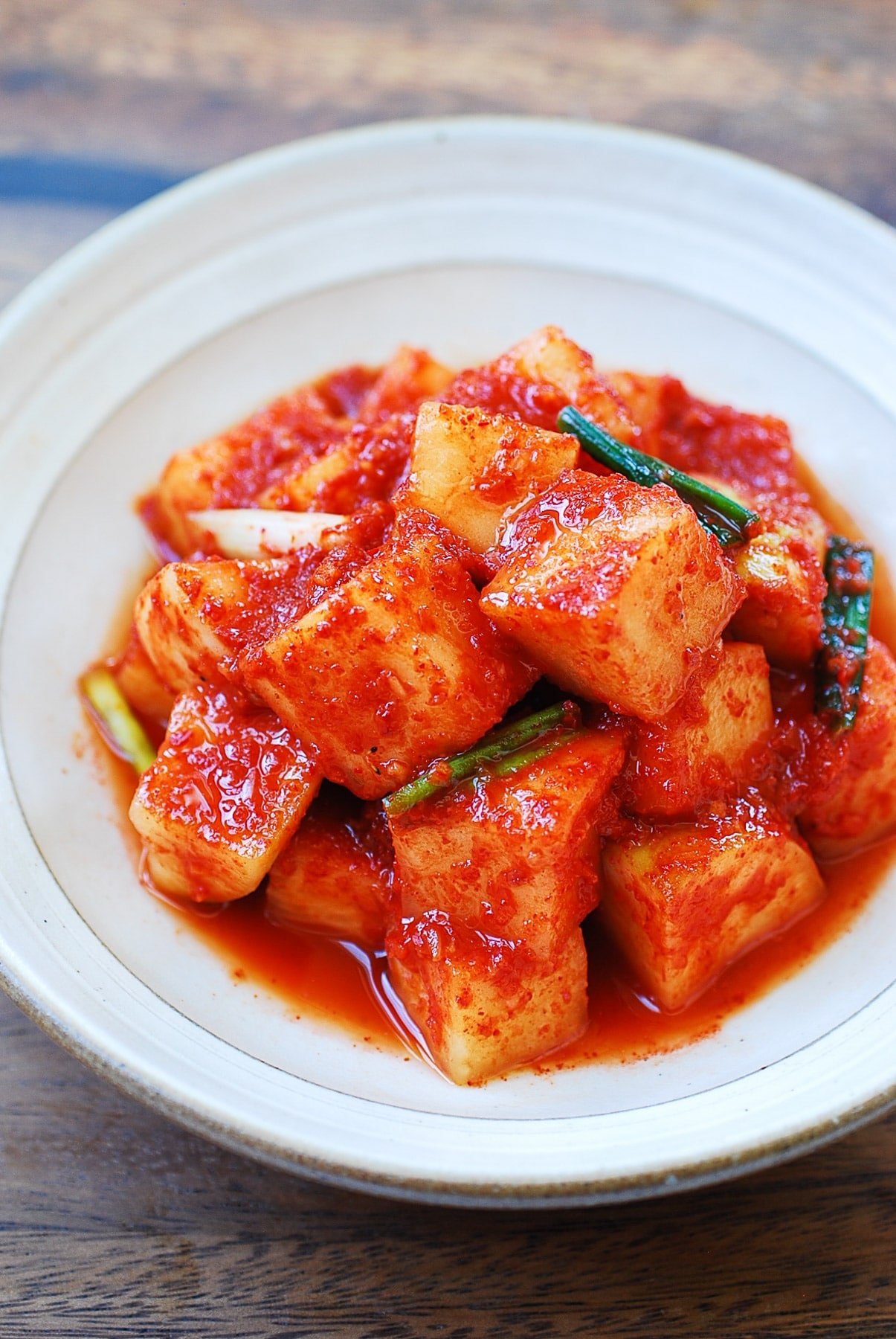


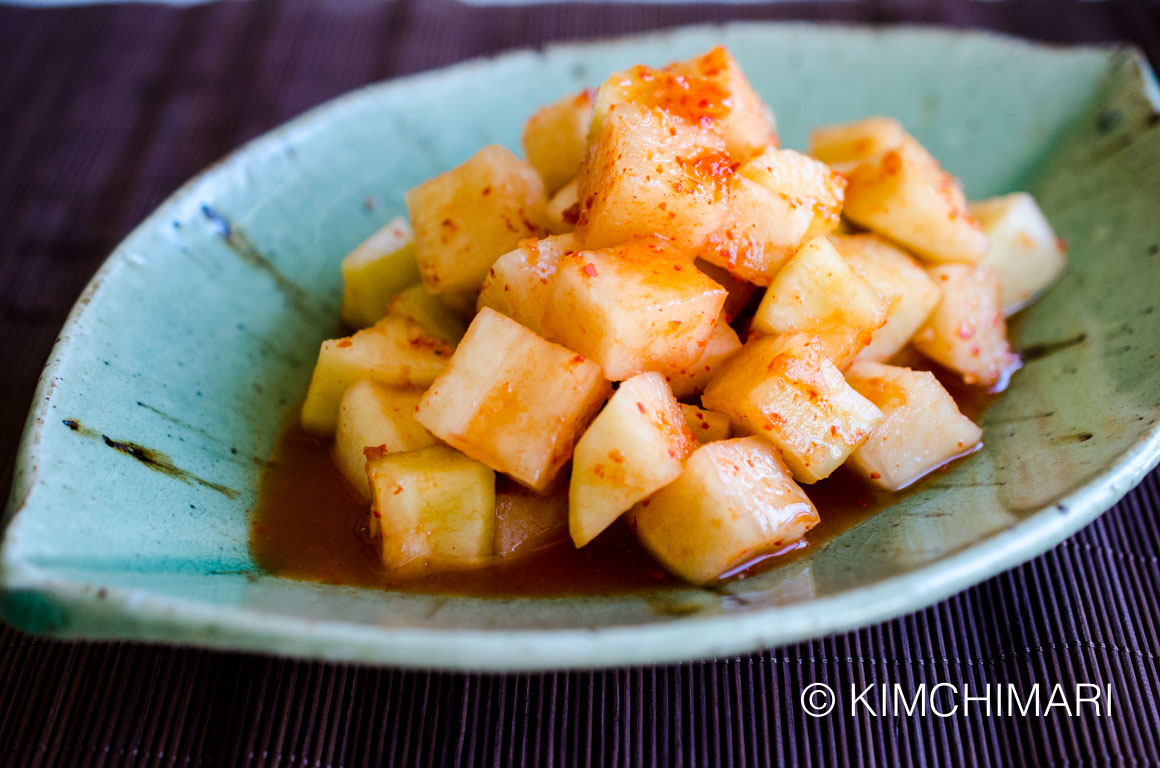

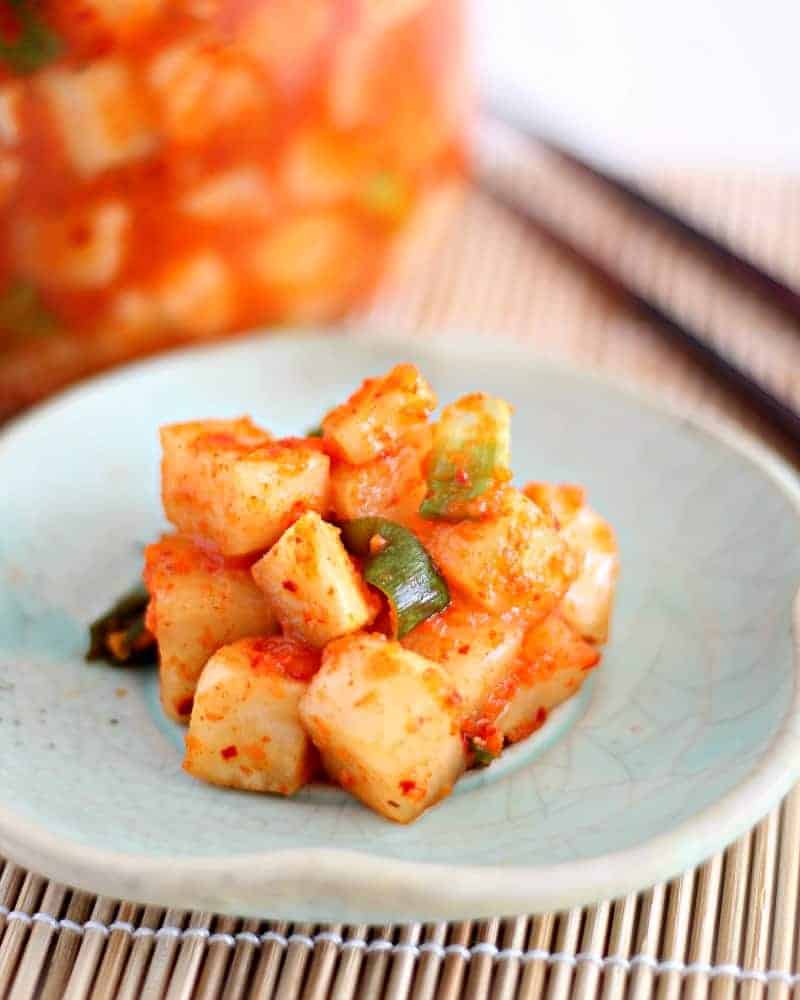

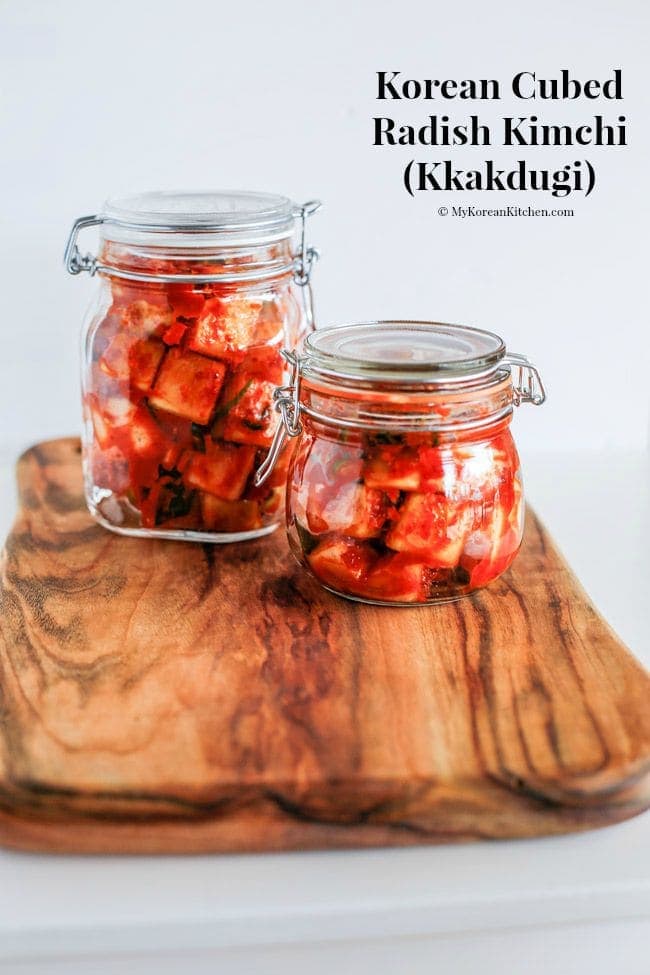
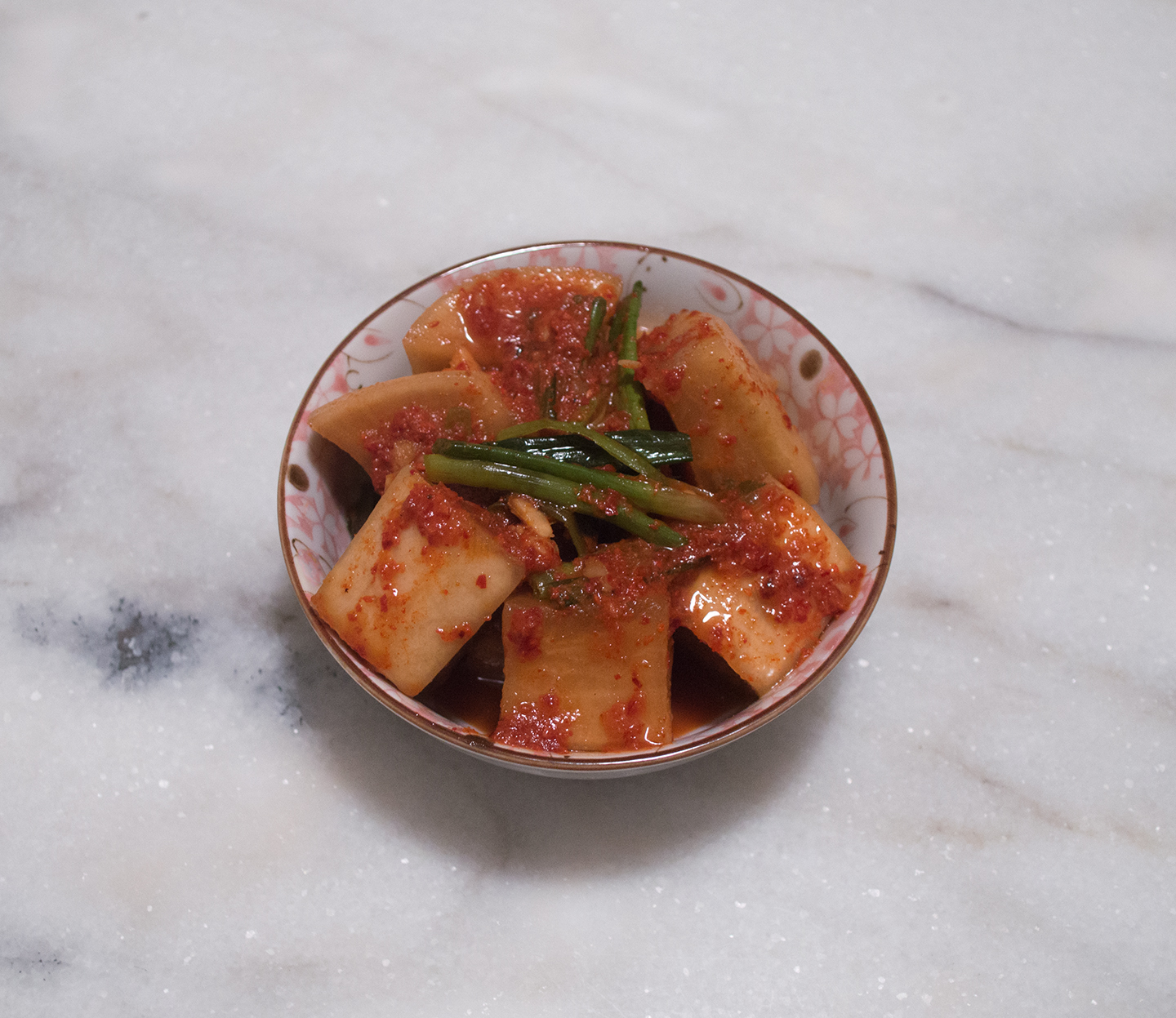
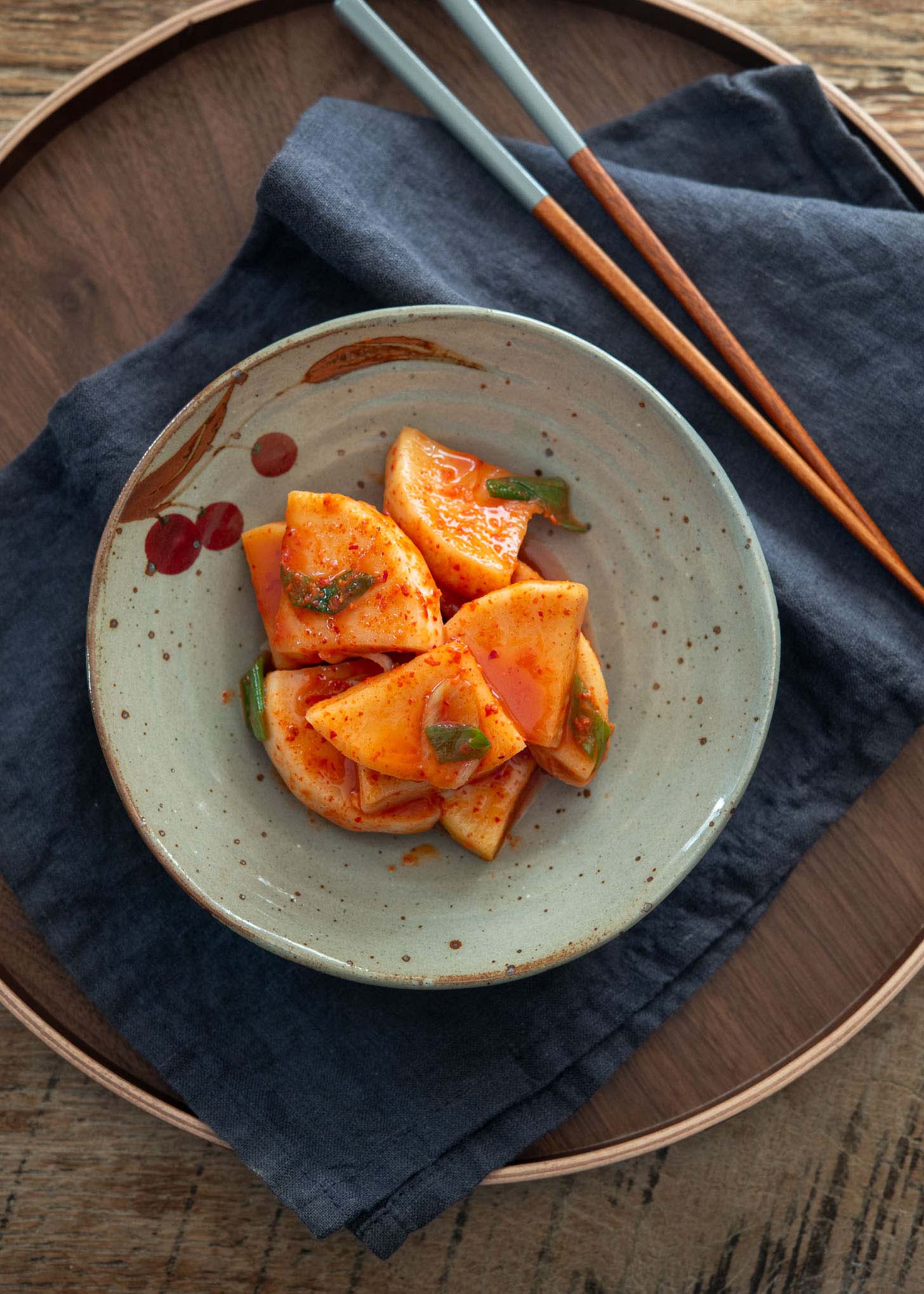
:max_bytes(150000):strip_icc()/4562071-7d2177e931a34163a606d0dd1da7d978.jpg)
